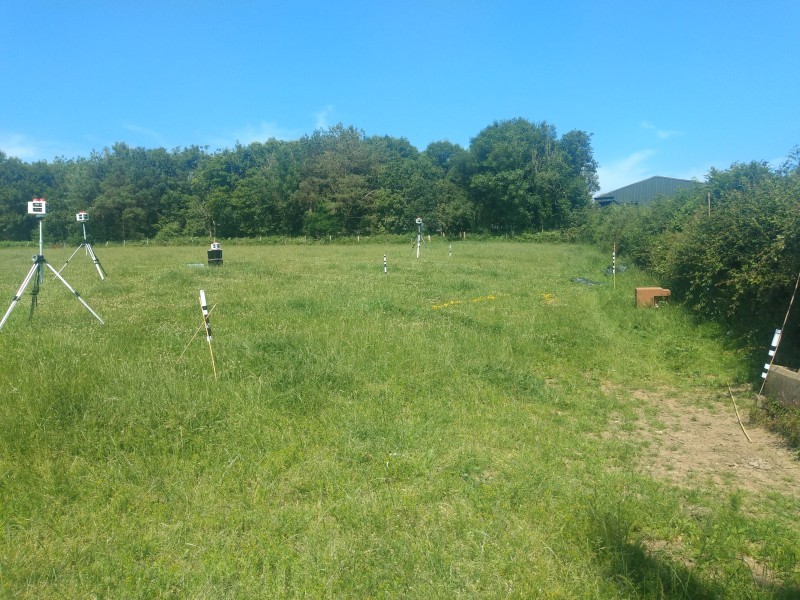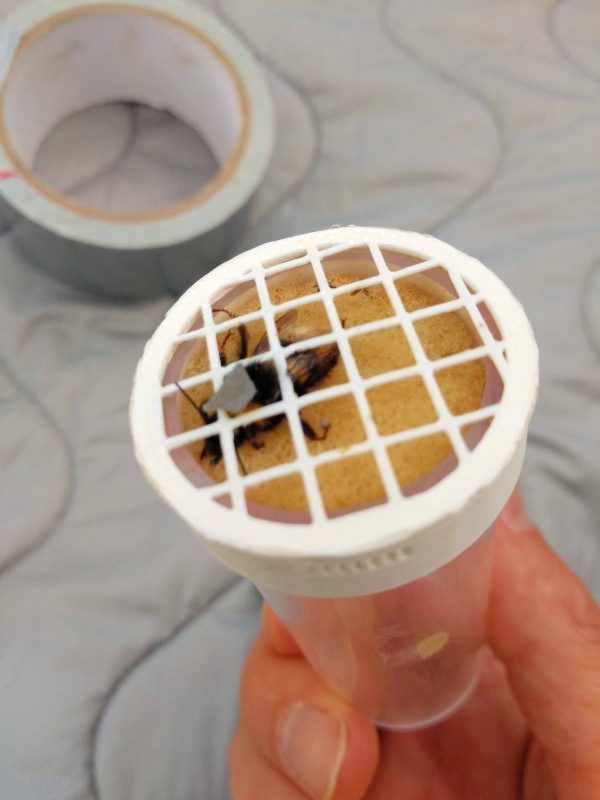Last week I visited Exeter University’s bumblebee field site, where we set up four tracking systems around a new hive.

The first issue we found was the bees that were tagged in the lab weren’t visible in the retroreflector images. We suspect due to wax getting on the tags. I’ll be investigating different retroreflector tag materials to see which is more immune to the effect of wax (either less gets on the tag, or it works even with some deposited). My hunch is that corner-cube plastic coated reflectors will do better – both because the wax might stick less but also because they don’t depend on the refractive index change between the surface of glass beads and air.

I found I could tag the bees with new tags in the field using my custom marking pots. These have wider gaps, which makes it very possible for the bee to escape. The next version will have a second mesh on top that means the bee is trapped until the field worker is ready (and the bee is immobilised by being held against the mesh by the sponge).
I suspect that the tag signal is unreliable simply because the ridge/tag is only visible from the side or above, so need to look at alternative tag shapes (rather than just a single ridge).
Next post: The analysis!…
